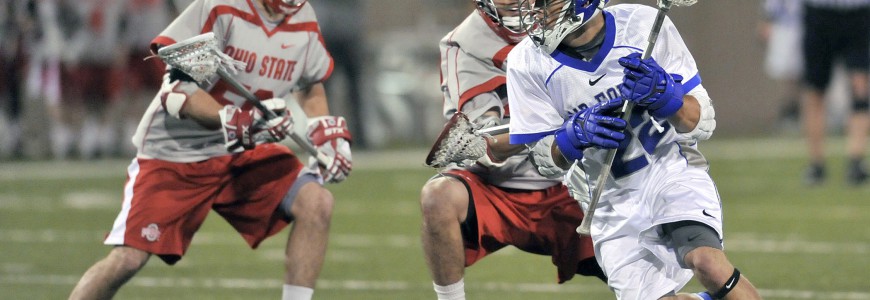By Brain Sharp
As the two boys sparred inside the Aquinas Institute gymnasium, Dave Robertson watched ringside, offering encouragement and coaching to his son: “Get out of the corner! Keep your hands up!”
His son, 15-year-old Mike Robertson, is a third-year boxer at Aquinas Institute, which claims to have the only in-house high school boxing program in the country.
This week, young Robertson and most of his teammates were fitted with high-tech headbands, equipped with sensors that help coaches, trainers and parents evaluate the blows students receive each time they step in the ring. The Linx IAS, a product of Rochester-based BlackBox Biometrics, is one of many such wearable technologies flooding the market.
The sophisticated technology is another tool for helping protect athletes and refine their training — highlighting, for example, which boxers take the most hits to the head, and thus need to work on keeping their hands up. But when it comes to integrating technology, sport and health science, gaps remain.
“We are still, as a scientific field, trying to establish a relationship between hits to the head and something bad to the brain,” said Dr. Jeffrey Bazarian, who has served as an adviser to BlackBox and is an emergency medicine professor with a concussion and research program at the University of Rochester Medical Center.
“It is tempting to think about this like cigarette smoking (increasing the risk of lung cancer). … But it’s not a one-to-one relationship. It gets complicated,” he said. “I don’t think anybody knows how this information is supposed to be used.”
Lightweight and about the size of a stick of gum, the Linx Impact Assessment System can be slipped into a custom headband or skullcap to be worn with almost any sport. Other companies are marketing clips, patches and helmet inserts.
The technology can help coaches coach better, and medical professionals assess an athlete’s condition. But Linx IAS and these other sensors are not medical devices and cannot prevent concussions.
Beyond tallying the number and magnitude of blows, the sensors record head movement to show where and how each hit is absorbed. Data is relayed in real time to a smartphone or tablet app. With the Linx, each blow is measured in degree of force from 1 to 100, color-coded (green is low impact, yellow is medium, and red is high), tabulated and tracked by individual across sports and over time. In addition to big hits, there is concern about the cumulative effect of repeated hits.



